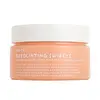What's inside
What's inside
 Key Ingredients
Key Ingredients

 Benefits
Benefits

 Concerns
Concerns

 Ingredients Side-by-side
Ingredients Side-by-side

Water
Skin ConditioningHamamelis Virginiana Water
AstringentPolysorbate 20
EmulsifyingLactic Acid
BufferingMandelic Acid
AntimicrobialSalix Alba Bark Extract
AstringentCamellia Sinensis Leaf Extract
AntimicrobialAchillea Millefolium Extract
CleansingAnthemis Nobilis Flower Extract
MaskingChamomilla Recutita Flower Extract
MaskingSaccharum Officinarum Extract
MoisturisingCitrus Aurantium Dulcis Fruit Extract
MaskingCitrus Limon Fruit Extract
MaskingGlycerin
HumectantSoy Isoflavones
Skin ConditioningCopper PCA
HumectantZinc PCA
HumectantPotassium Hydroxide
BufferingDisodium EDTA
Citric Acid
BufferingCaprylic/Capric Triglyceride
MaskingCucumis Sativus Fruit Extract
EmollientCitrus Limon Peel Extract
EmollientRose Extract
Skin ConditioningTriethyl Citrate
MaskingPyrus Malus Fruit Extract
Skin ConditioningCoriandrum Sativum Fruit/Leaf Extract
AntiseborrhoeicFucus Vesiculosus Extract
EmollientJasminum Officinale Flower/Leaf Extract
MaskingPrunus Persica Fruit Extract
AbrasiveRosmarinus Officinalis Leaf Extract
AntimicrobialRubus Idaeus Fruit Extract
AstringentVaccinium Macrocarpon Fruit Extract
AstringentVanilla Planifolia Fruit Extract
Skin ConditioningCitrus Aurantium Bergamia Fruit Extract
Skin ConditioningLavandula Angustifolia Flower/Leaf/Stem Extract
MaskingBenzoic Acid
MaskingPhenoxyethanol
PreservativeSodium Benzoate
MaskingSodium Bicarbonate
AbrasiveSodium Hyaluronate
HumectantColloidal Oatmeal
AbsorbentCentella Asiatica Extract
CleansingPhospholipids
Skin ConditioningAdenosine
Skin ConditioningResveratrol
AntioxidantUbiquinone
AntioxidantLeuconostoc/Radish Root Ferment Filtrate
AntimicrobialSodium PCA
HumectantButylene Glycol
HumectantOctoxynol-9
EmulsifyingTetrasodium EDTA
Potassium Sorbate
PreservativeWater, Hamamelis Virginiana Water, Polysorbate 20, Lactic Acid, Mandelic Acid, Salix Alba Bark Extract, Camellia Sinensis Leaf Extract, Achillea Millefolium Extract, Anthemis Nobilis Flower Extract, Chamomilla Recutita Flower Extract, Saccharum Officinarum Extract, Citrus Aurantium Dulcis Fruit Extract, Citrus Limon Fruit Extract, Glycerin, Soy Isoflavones, Copper PCA, Zinc PCA, Potassium Hydroxide, Disodium EDTA, Citric Acid, Caprylic/Capric Triglyceride, Cucumis Sativus Fruit Extract, Citrus Limon Peel Extract, Rose Extract, Triethyl Citrate, Pyrus Malus Fruit Extract, Coriandrum Sativum Fruit/Leaf Extract, Fucus Vesiculosus Extract, Jasminum Officinale Flower/Leaf Extract, Prunus Persica Fruit Extract, Rosmarinus Officinalis Leaf Extract, Rubus Idaeus Fruit Extract, Vaccinium Macrocarpon Fruit Extract, Vanilla Planifolia Fruit Extract, Citrus Aurantium Bergamia Fruit Extract, Lavandula Angustifolia Flower/Leaf/Stem Extract, Benzoic Acid, Phenoxyethanol, Sodium Benzoate, Sodium Bicarbonate, Sodium Hyaluronate, Colloidal Oatmeal, Centella Asiatica Extract, Phospholipids, Adenosine, Resveratrol, Ubiquinone, Leuconostoc/Radish Root Ferment Filtrate, Sodium PCA, Butylene Glycol, Octoxynol-9, Tetrasodium EDTA, Potassium Sorbate
 Reviews
Reviews

Ingredients Explained
These ingredients are found in both products.
Ingredients higher up in an ingredient list are typically present in a larger amount.
Lactic Acid is another well-loved alpha hydroxy acid (AHA). It is gentler than glycolic acid but still highly effective.
Its main role is to exfoliate the surface of the skin by loosening the “glue” that holds dead skin cells together. Shedding those old cells leads to smoother, softer, and more even-toned skin.
Because lactic acid molecules are larger than glycolic acid, they don’t penetrate as deeply. This means they’re less likely to sting or irritate, making it a great choice for beginners or those with sensitive skin.
Like glycolic acid, it can:
Lactic acid also acts as a humectant (like hyaluronic acid). It can draw water into the skin to improve hydration and also plays a role in the skin's natural moisturizing factor (NMF) in the form of sodium lactate.
Studies show it can boost ceramide production to strengthen the skin barrier and even help balance the skin’s microbiome.
To get results, choose products with a pH between 3-4.
Lower strengths (5-12%) focus on surface exfoliation; higher strengths (12% and up) can reach deeper in the dermis (deeper, supportive layer) to improve skin texture and firmness over time.
Though it was originally derived from milk, most modern lactic acid used in skincare is vegan. It is made through non-dairy fermentation to create a bio-identical and stable form suitable for all formulations.
When lactic acid shows up near the end of an ingredient list, it usually means the brand added just a tiny amount to adjust the product’s pH.
Legend has it that Cleopatra used to bathe in sour milk to help reduce wrinkles.
Lactic acid is truly a gentle multitasker: it exfoliates, hydrates, strengthens, and brightens. It's a great ingredient for giving your skin a smooth, glowing, and healthy look without the harshness of stronger acids.
Read more about some other popular AHA's here:
Learn more about Lactic AcidPolysorbate 20 is made by combining ethoxylation of sorbitan, ethylene oxide, and lauric acid. It is a mild cleansing agent, surfactant, and emulsifier.
As a surfactant, it helps collect dirt and oils for washing. Emulsifiers prevent oils and water from separating.
Polysorbate 20 also adds scent to a product. Since it is made using sorbitol, it has a sweet scent. Sorbitol can also be found in fruits such as apples and peaches.
The lauric acid used to create Polysorbate 20 is often derived from coconuts.
Polysorbate 20 may not be fungal acne safe.
Learn more about Polysorbate 20Potassium Sorbate is a preservative used to prevent yeast and mold in products. It is commonly found in both cosmetic and food products.
This ingredient comes from potassium salt derived from sorbic acid. Sorbic acid is a natural antibiotic and effective against fungus.
Both potassium sorbate and sorbic acid can be found in baked goods, cheeses, dried meats, dried fruit, ice cream, pickles, wine, yogurt, and more.
You'll often find this ingredient used with other preservatives.
Learn more about Potassium SorbateWater. It's the most common cosmetic ingredient of all. You'll usually see it at the top of ingredient lists, meaning that it makes up the largest part of the product.
So why is it so popular? Water most often acts as a solvent - this means that it helps dissolve other ingredients into the formulation.
You'll also recognize water as that liquid we all need to stay alive. If you see this, drink a glass of water. Stay hydrated!
Learn more about Water